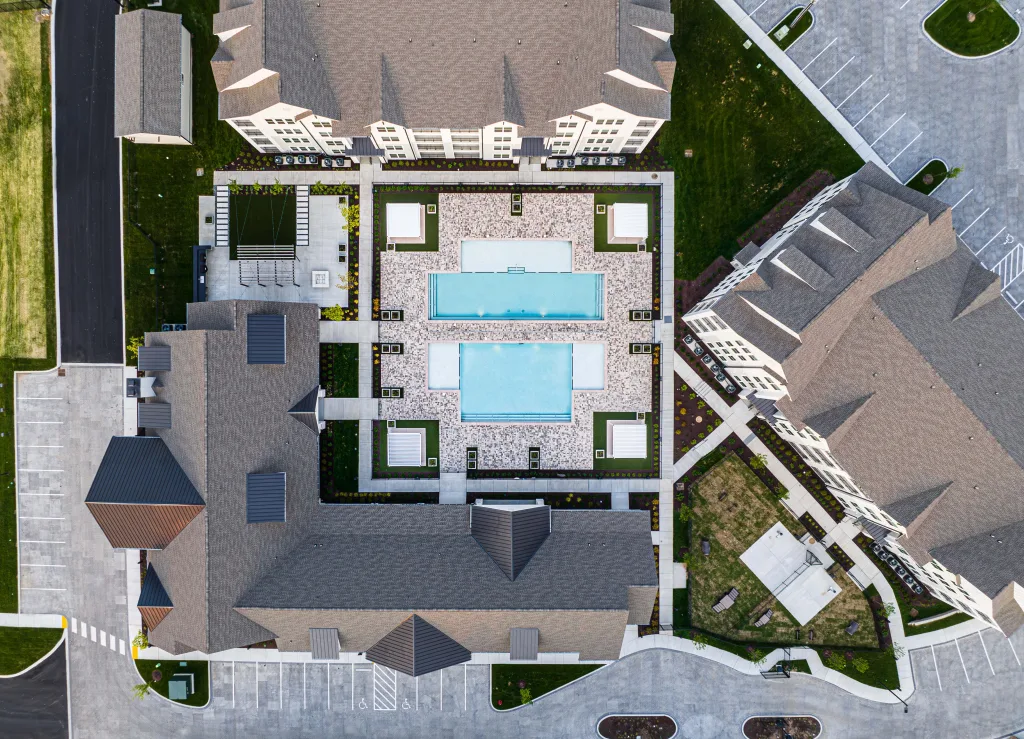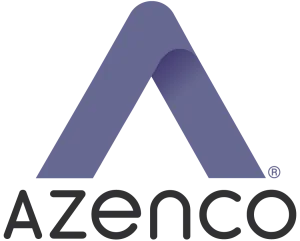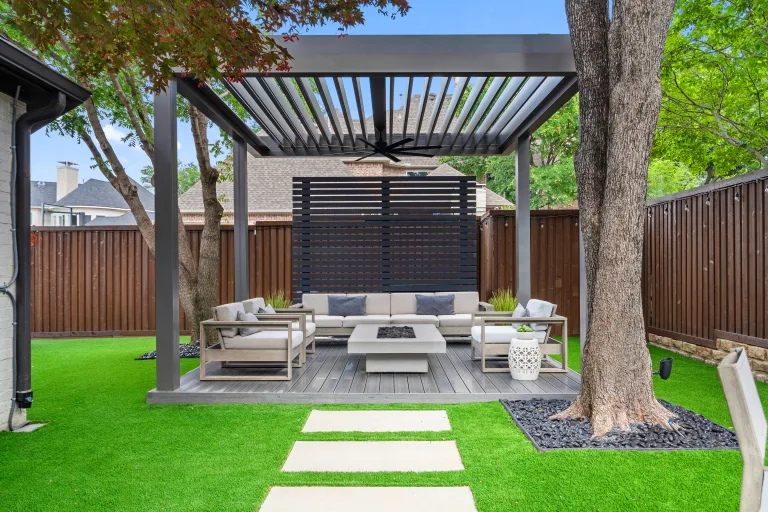An aluminum pergola on grass can be a fantastic addition to any outdoor space, providing shade and style without major construction. Many homeowners and business owners consider this option to create a cozy area for relaxation, dining, or entertainment. However, concerns about stability, durability, and maintenance often arise. Since grass is not as firm as concrete or a deck, special considerations are necessary to ensure a long-lasting and secure installation.
For those looking for a hassle-free solution, the K-BANA™ platform edition may not require anchoring or permits, depending on location and local restrictions. This makes it a great option for homeowners who want flexibility without complex installations.
Table of Contents
Benefits of Installing a Pergola on Grass
A pergola on grass enhances the aesthetics of an outdoor living space without requiring extensive landscaping. It offers flexibility in placement, allowing you to position it in any suitable spot. Unlike concrete patios, a pergola on grass blends seamlessly into the outdoor space, creating a more natural feel. It can also help define an area for relaxation, dining, or social gatherings, making your backyard more inviting.
Challenges of Building a Pergola on Grass
While a pergola on grass offers many advantages, there are also some challenges. The lack of a stable base can lead to shifting over time, especially in areas with heavy rain or changing temperatures. Additionally, soil movement can impact the solid foundation, making it necessary to reinforce the structure. In some regions, local building codes may restrict freestanding structures, so checking regulations before installation is essential.
Evaluate Your Lawn's Condition
Different soil compositions, such as clay or sand, affect how well the pergola will stay in place. Poor drainage can lead to water pooling, which weakens the ground and increases the risk of shifting over time.
Evaluating Soil Type and Drainage
Different soils react differently to structures. Muddy soil can cause sinking, while sandy soil may lack grip. Proper drainage ensures the ground remains firm, reducing the risk of soil erosion and instability beneath the pergola.
For locations prone to excessive moisture, using gravel or compacted sand as a base can help improve stability.
Checking for Level Ground
A level surface is necessary for a secure pergola installation. If your backyard is uneven, you may need to level the ground or seek professional assistance to ensure the structure stands firm.




Understanding Local Building Codes
Some cities have regulations regarding freestanding pergolas. Before installing a pergola on grass, check if permits or anchoring requirements are necessary to avoid issues later.
More permanent pergola models, such as motorized louvered pergola, slatted roof pergola, and patio cover™, require proper anchoring to a solid foundation to ensure long-term stability. These structures provide durability but need secure footings to handle wind, rain, and long-term use.
Material Options
The material of your pergola posts affects stability. Aluminum pergolas are the best option for grass installations because they are lightweight yet durable. Wood and steel structures may require additional support.
Impact on Stability
Heavier pergolas require a stronger foundation to prevent shifting due to wind or soil movement. Materials like steel or solid wood add weight, making proper anchoring essential. Choosing the right pergola material ensures long-term stability and reduces the risk of sinking over time.
Thinking about upgrading your outdoor space?
Our brochure is packed with inspiration, design options, and key details to help you make the right choice.
Preparation Steps for Installation
Before placing a pergola on grass, take these essential steps:
- Mark the area where the pergola will be placed.
- Clear debris and obstacles from the ground.
- Measure and level the ground.
- Consider a solid foundation if necessary for long-term durability.
- Consult a professional for proper anchoring methods if needed.
Anchoring Methods for Stability
The best anchoring method depends on the location and pergola design. Some options include:
Concrete Footings
For permanent installations, concrete footings offer the most stability, preventing shifting and ensuring durability. R-BLADE™, R-BREEZE™, and R-SHADE™ require secure footings to ensure optimal performance and longevity.
Ground Screws
These provide a semi-permanent solution and secure the structure without requiring a full concrete foundation. They offer stability while allowing for easier relocation or adjustments if needed. Additionally, they help reduce installation time and costs compared to traditional concrete foundations.
Weighted Bases
Ideal for temporary or rental properties, weighted bases prevent movement while avoiding major ground alterations. They provide a sturdy anchoring solution without the need for digging or permanent fixtures. This makes them a flexible and convenient choice for a variety of outdoor setups.
Maintenance Tips for Longevity
To keep your pergola on grass in good condition:
- Regularly check the stability of the structure.
- Maintain the grass and soil around the base to prevent erosion.
- Re-anchor if needed, especially after heavy rain or strong winds.
Evaluating Pergola Type and Weight
The design of a pergola impacts its suitability for a grass installation. Lightweight pergolas are easier to anchor, while heavier structures may require stronger foundations. Consider weight when choosing a pergola for your outdoor space.
For homeowners seeking a permanent and durable solution, our pergola collections provide excellent protection and weather resistance but must be properly anchored. Those looking for more flexibility may opt for lighter options that do not require permanent footings, such as the K-BANA™.

Conclusion
Installing a pergola on grass is possible with the right preparation and anchoring methods. By evaluating your lawn, selecting suitable materials, and following proper installation steps, you can create a beautiful and functional outdoor living space.
For an effortless solution, the K-BANA™ floor edition may not require anchoring or permits, depending on the location. For those seeking long-term durability, R-BLADE™, R-BREEZE™, and R-SHADE™ are excellent options but require secure anchoring. Explore different options and find the best fit for your backyard or garden!
Ready to bring your outdoor vision to life?
Tell us about your project, and our certified local dealer will provide a tailored quote with the best options—no commitment, just expert guidance.
Frequently Asked Questions
Can you install a pergola directly on grass?
What is the best way to anchor a pergola on grass?
The optimal anchoring method depends on the pergola’s design and your specific needs:
- Concrete Footings: Digging holes and setting posts in concrete provides a permanent and sturdy foundation.
- Ground Screws: These are ideal for temporary installations and can be installed without digging.
- Weighted Base Plates: Suitable for lightweight pergolas, these plates add stability without the need for ground penetration.
Each method offers varying degrees of permanence and stability, so choose the one that aligns with your project’s requirements.
Do I need a permit to build a pergola on grass?
Will the grass under the pergola die?
Grass under a pergola may receive less sunlight and water, potentially leading to thinning or browning over time. To maintain a healthy lawn, consider:
- Using a pergola design that allows sufficient light penetration.
- Selecting shade-tolerant grass varieties.
- Implementing a maintenance routine that includes proper watering and mowing practices.


